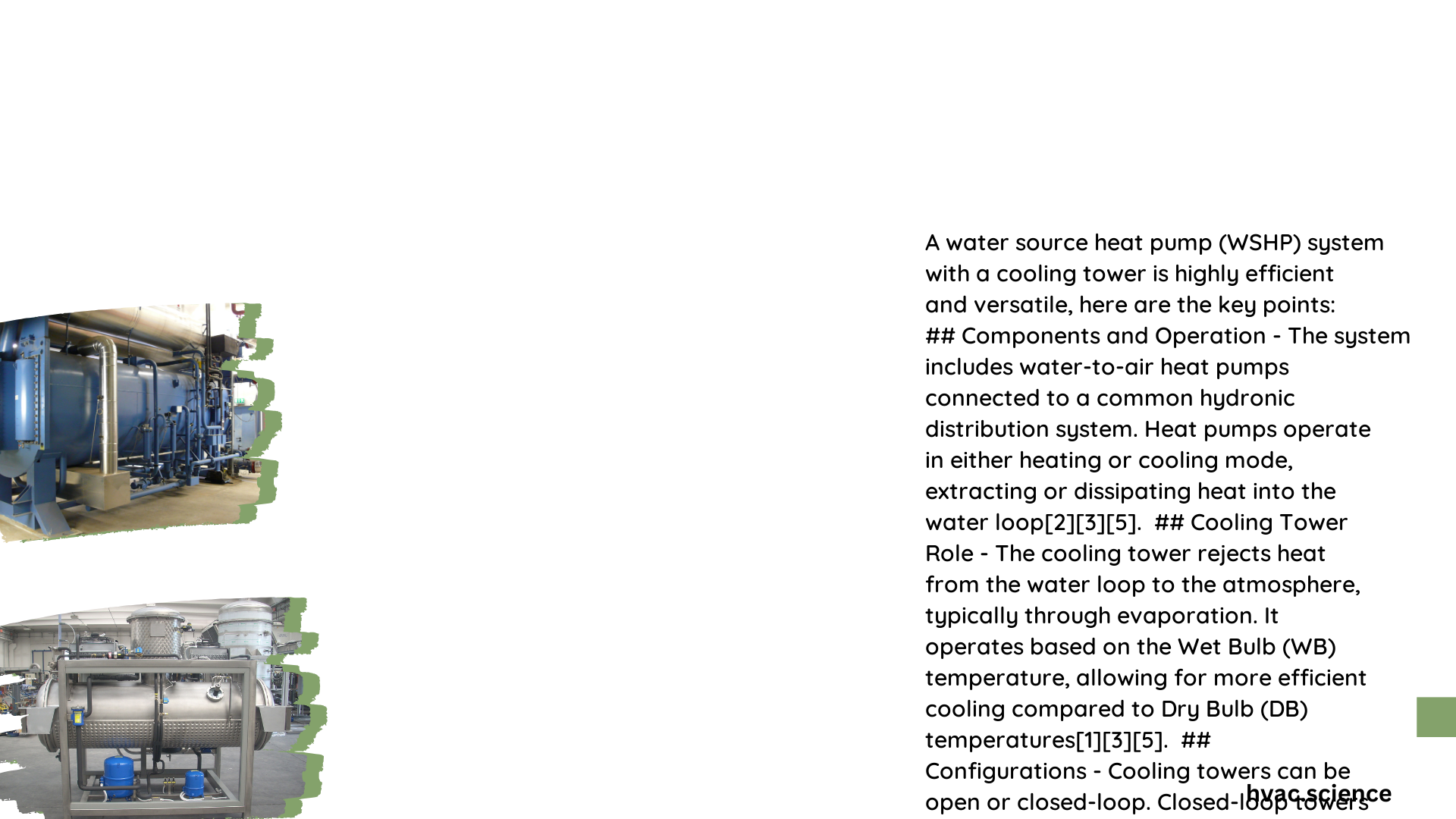Water source heat pumps with cooling towers represent a sophisticated and energy-efficient HVAC solution that leverages water’s superior thermal transfer capabilities. These systems utilize a hydronic loop connected to a cooling tower, enabling precise temperature management, simultaneous heating and cooling, and significantly higher efficiency compared to traditional air-source heat pump technologies. By intelligently moving thermal energy between building zones, these systems can dramatically reduce energy consumption and operational costs.
What Makes Water Source Heat Pumps Unique?
Water source heat pumps (WSHPs) distinguish themselves through remarkable thermal transfer efficiency and versatility. Unlike traditional HVAC systems, they use water as a medium for heat exchange, providing several critical advantages:
Key Performance Characteristics
- Efficiency Range:
- Cooling Efficiency (EER): 12.2 – 17.4
- Heating Efficiency (COP): 3.7 – 5.0
- Temperature Adaptability: Maintains performance across diverse climatic conditions
- Energy Transfer Mechanism: Utilizes water’s superior heat capacity
How Do Cooling Towers Enhance Heat Pump Performance?

Cooling towers play a pivotal role in water source heat pump systems by:
- Heat Rejection Mechanism
- Dissipate excess thermal energy from the water loop
-
Maintain optimal water temperature for efficient heat transfer
-
System Temperature Regulation
- Enable precise control of hydronic loop temperatures
- Prevent thermal overload in complex HVAC configurations
Cooling Tower Technical Specifications
| Parameter | Typical Range |
|---|---|
| Heat Rejection Capacity | 50-500 tons |
| Water Flow Rate | 50-1000 GPM |
| Approach Temperature | 5-10°F |
| Efficiency Factor | 0.7-0.95 |
What Components Comprise a Water Source Heat Pump System?
Essential components include:
- Hydronic Loop: Closed-circuit water distribution network
- Heat Pump Units: Individual zone temperature controllers
- Cooling Tower: Thermal energy dissipation infrastructure
- Boiler: Supplemental heat generation system
- Control Interface: Building automation system
How to Design an Effective Water Source Heat Pump Installation?
Design Considerations
- Load Calculation: Precise building heating/cooling requirements
- Pipe Sizing: Minimize energy losses
- Thermal Storage: Optimize water loop capacity
- Zoning Strategy: Individual zone temperature management
What Maintenance Practices Ensure Optimal Performance?
Recommended maintenance protocols:
- Biannual system inspections
- Cooling tower cleaning
- Water chemistry monitoring
- Refrigerant level verification
- Corrosion prevention treatments
What Are the Economic Benefits?
- Lower Operating Costs: 30-50% energy savings
- Reduced Carbon Footprint
- Extended Equipment Lifespan
- Flexible Zone Control
Potential Challenges and Mitigation Strategies
- Initial Investment: Higher upfront costs
- Water Quality Management
- Complex Installation Requirements
Mitigation Approaches
- Comprehensive feasibility studies
- Professional design and installation
- Regular preventative maintenance
Emerging Technological Trends
- Smart Control Integration
- Enhanced Refrigerant Technologies
- Predictive Maintenance Systems
- Renewable Energy Compatibility
Conclusion
Water source heat pumps with cooling towers represent a sophisticated, energy-efficient HVAC solution suitable for diverse applications. By understanding their technical nuances and implementing strategic design principles, organizations can achieve substantial energy savings and environmental sustainability.
